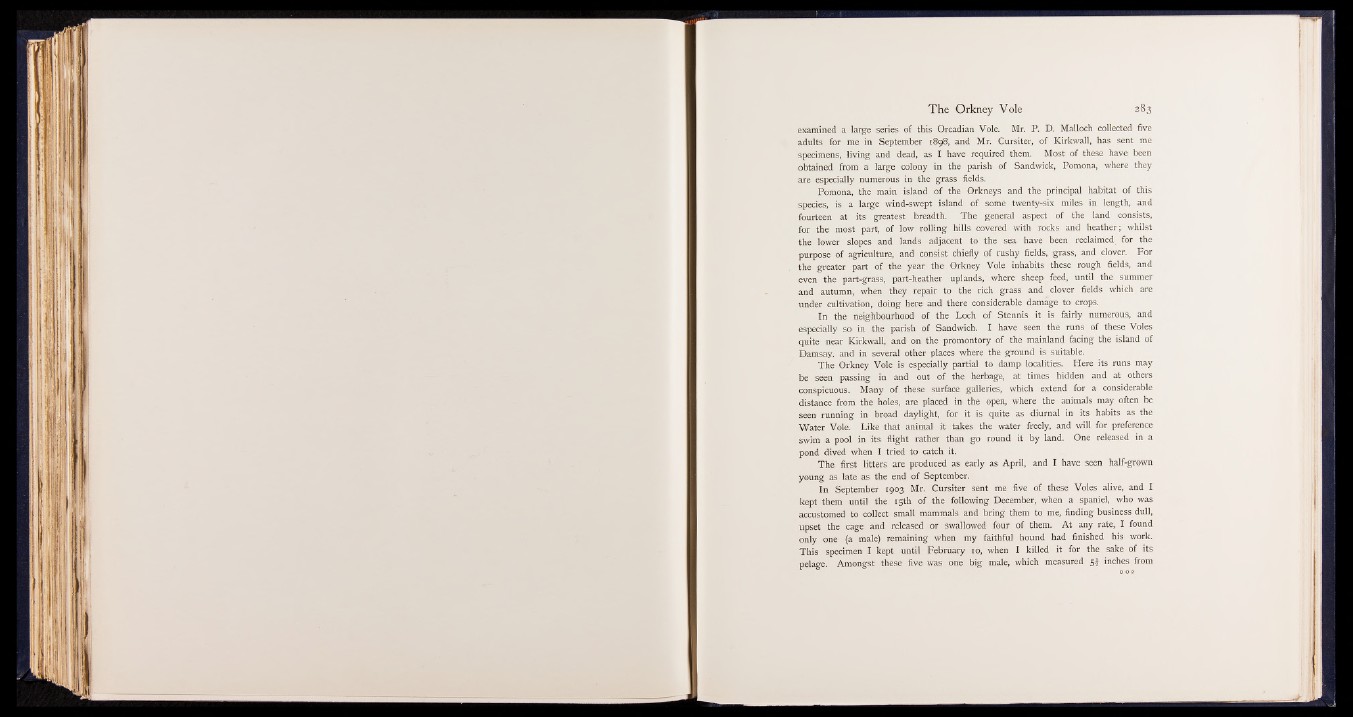
examined a large series of this Orcadian Vole. Mr. P. D. Malloch collected five
adults for me in September 1898, and Mr. Cursiter, of Kirkwall, has sent me
specimens, living and dead, as I have required them. Most of these have been
obtained from a large colony in the parish of Sandwick, Pomona, where they
are especially numerous in the grass fields.
Pomona, the main island of the Orkneys and the principal habitat of this
species, is a large wind-swept island of some twenty-six miles in length, and
fourteen at its greatest breadth. The general aspect of the land consists,
for the most part, of low rolling hills covered with rocks and heather; whilst
the lower slopes and lands adjacent to the sea have been reclaimed for the
purpose of agriculture, and consist chiefly of rushy fields, grass, and clover. For
the greater part of the year the Orkney Vole inhabits these rough fields, and
even the part-grass, part-heather uplands, where sheep feed, until the summer
and autumn, when they repair to the rich grass and clover fields which are
under cultivation, doing here and there considerable damage to crops.
In the neighbourhood of the Loch of Stennis it is fairly numerous, and
especially so in the parish of Sandwich. I have seen the runs of these Voles
quite near Kirkwall, and on the promontory of the mainland facing the island of
Damsay, and in several other places where the ground is suitable.
The Orkney Vole is especially partial to damp localities. Here its runs may
be seen passing in and out of the herbage, at times hidden and at others
conspicuous. Many of these surface galleries, which extend for a considerable
distance from the holes, are placed in the open, where the animals may often be
seen running in broad daylight, for it is quite as diurnal in its habits as the
Water Vole. Like that animal it takes the water freely, and will for preference
swim a pool in its flight rather than go round it by land. One released in a
pond dived when I tried to catch it.
The first litters are produced as early as April, and I have seen half-grown
young as late as the end of September.
In September 1903 Mr. Cursiter sent me five of these Voles alive, and I
kept them until the 15th of the following December, when a spaniel, who was
accustomed to collect small mammals and bring them to me, finding business dull,
upset the cage and released or swallowed four of them. At any rate, I found
only one (a male) remaining when my faithful hound had finished his work.
This specimen I kept until February 10, when I killed it for the sake of its
pelage. Amongst these five was one big male, which measured 5^ inches from